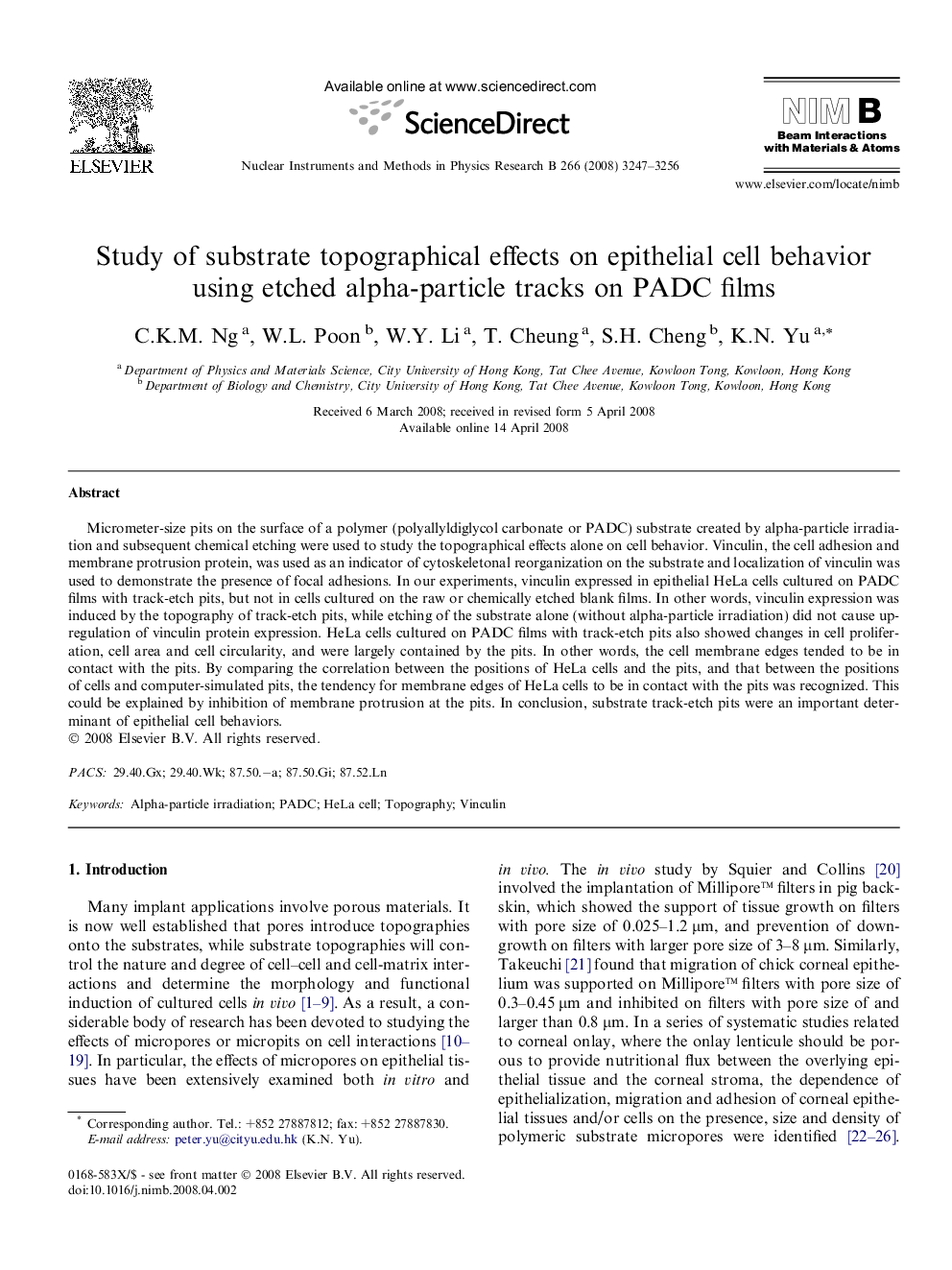| Article ID | Journal | Published Year | Pages | File Type |
|---|---|---|---|---|
| 1685885 | Nuclear Instruments and Methods in Physics Research Section B: Beam Interactions with Materials and Atoms | 2008 | 10 Pages |
Micrometer-size pits on the surface of a polymer (polyallyldiglycol carbonate or PADC) substrate created by alpha-particle irradiation and subsequent chemical etching were used to study the topographical effects alone on cell behavior. Vinculin, the cell adhesion and membrane protrusion protein, was used as an indicator of cytoskeletonal reorganization on the substrate and localization of vinculin was used to demonstrate the presence of focal adhesions. In our experiments, vinculin expressed in epithelial HeLa cells cultured on PADC films with track-etch pits, but not in cells cultured on the raw or chemically etched blank films. In other words, vinculin expression was induced by the topography of track-etch pits, while etching of the substrate alone (without alpha-particle irradiation) did not cause up-regulation of vinculin protein expression. HeLa cells cultured on PADC films with track-etch pits also showed changes in cell proliferation, cell area and cell circularity, and were largely contained by the pits. In other words, the cell membrane edges tended to be in contact with the pits. By comparing the correlation between the positions of HeLa cells and the pits, and that between the positions of cells and computer-simulated pits, the tendency for membrane edges of HeLa cells to be in contact with the pits was recognized. This could be explained by inhibition of membrane protrusion at the pits. In conclusion, substrate track-etch pits were an important determinant of epithelial cell behaviors.
